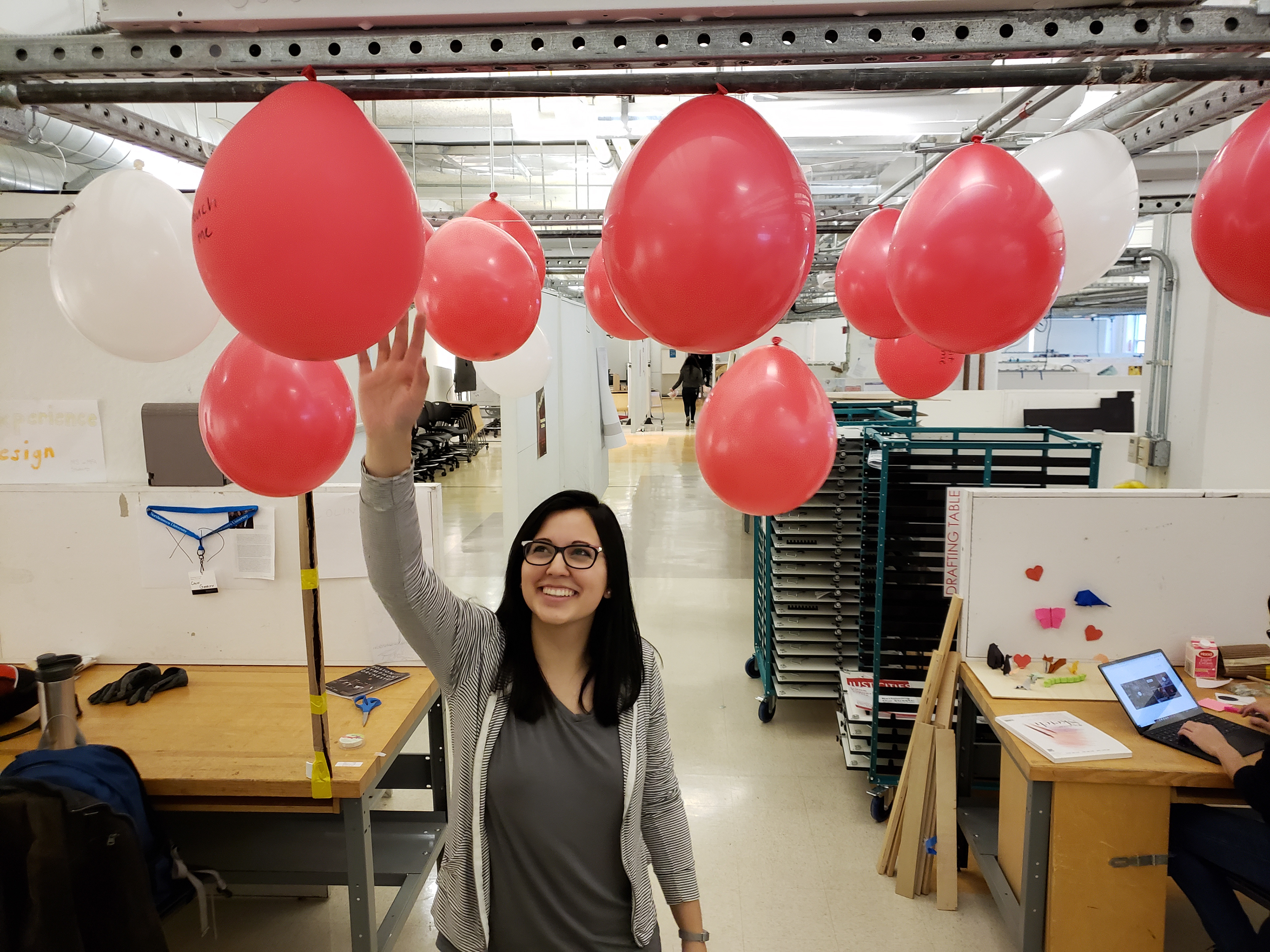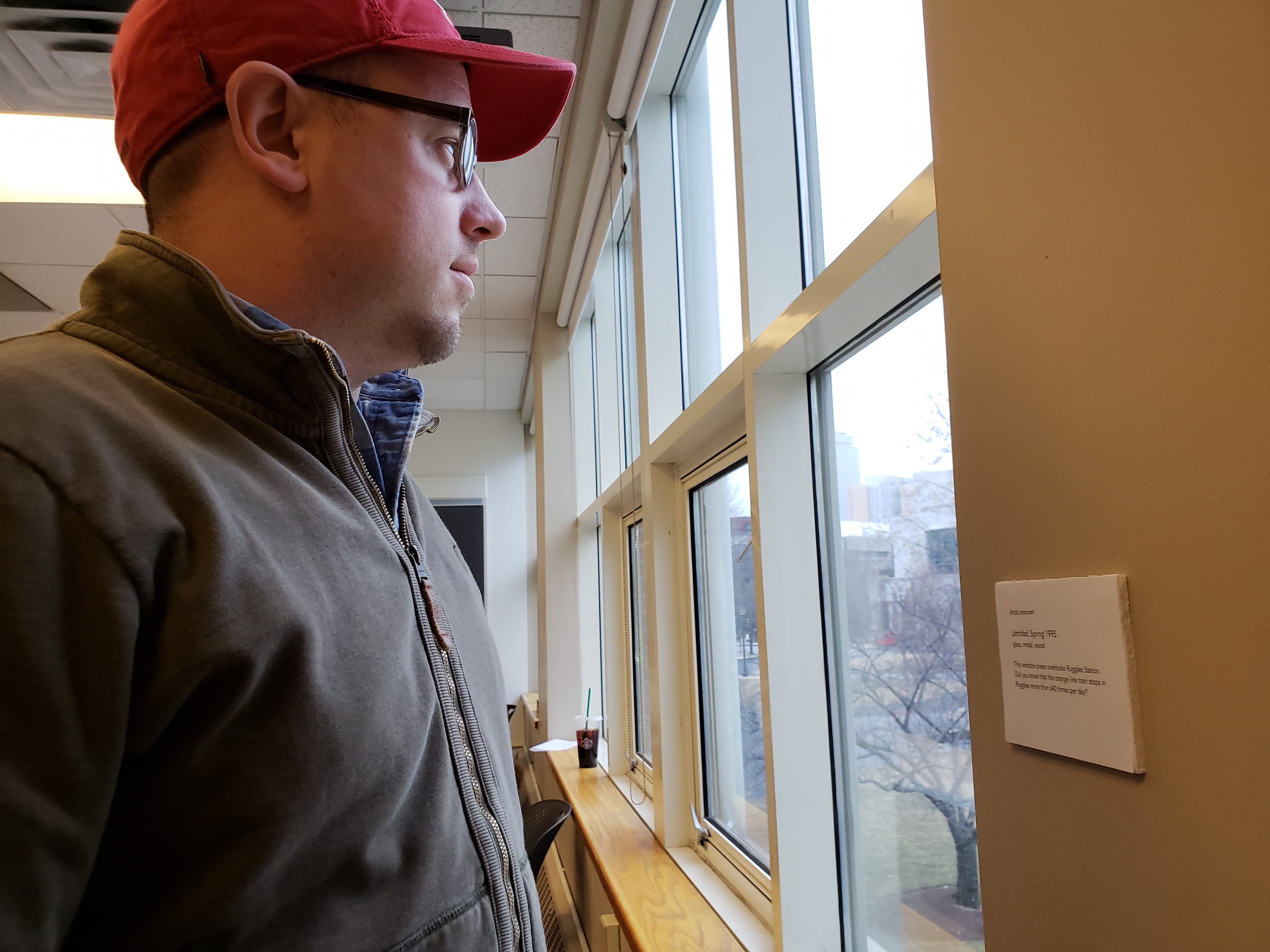

Background
When I first read about Forsythe’s Choreographic Objects, I was a little doubtful about the usefulness of this theoretical practice other than just art and play. After our ICA visit and exploration of these objects I found myself engaging with some, but not paying attention to others, particularly the ones without “objects” or the ones that were more so “reading instructions”. However, I did relate the idea that the key aspect of “choreographic objects” is to engage participants in an experimental and interactive environment promoting “physical thinking” or as Forsythe’s refers to “the body as a thinking tool” (Neri and Respini 49,9). When engaging with Forsythe’s ICA exhibition, I definitely found myself being aware of my body, its limitations as well as abilities. I was in fact, thinking before engaging with them, during the interaction and after, by reflecting upon them or sharing the experience with the class.
It was these reflections that sparked my desire to be able to find a purpose for these objects other than just being in an art museum. While I was thinking about this, I was using my phone when I found a video from the World Economic Forum talking about how anxiety and work-related stress is affecting approximately 4% of the world’s population (increasing everyday) and it’s expected to be the world’s biggest mental health problem. I immediately thought that as an experience designer, I needed to address this problem and do something about it in order to improve employees’ experience at work. So, I talked to my partner and we decided to find a way to try to utilize the concept behind choreographic objects and apply it in the workplace.
Forsythe's Exhibit at the ICA, Boston
Design Research
We decided to further analyze other interactions with artistic and playful objects, that would somehow, take people out of their daily routines and immerse them in a mindful experience. Thus, we visited the Museum of Fine Arts for another observation. Here, we analyzed how people approach, observe, engage and interact with signs, signage, objects, pieces of art and its descriptions. We learned there, that people in general, for a moment when they read the descriptions and appreciate art, were somehow abstracted in that moment, stepping away from reality and “forgetting” for a second their problems and preoccupations. This insight inspired us to think of the workplace as a “museum-like” environment. We decided to call this project “Work, make … take a break!” inspired on an ICA exhibition for kids and family called “See, play, make … take a break”.
The project’s goal is to reduce anxiety and stress and help with happiness and productivity at work through the placement of choreographic objects for interactive and engaging break times. I particularly foresee this project being applied as a program-based rotating ‘exhibitions’ on a monthly/quarterly basis.
We applied some research methods for design in order to understand how employees interact with each other and with their environments in a potential site.
We had brainstorming sessions to come up with ideas of choreographic objects that could be applicable at work. As part of our research, we looked for similar projects that had been done and found other Forsythe’s objects involving bouncy houses (White Bouncy Castle at Lokhalle Schöneberg) and balloons (Scattered Crowd, 2002) which inspired us with additional ideas.
Prototyping and User Experience
After our discoveries, we decided to test our lo-fi prototypes. We chose 2 prototypes: balloons hanging from the ceiling and clay. We selected the hallways at the architecture studio and hung some balloons, and observed. The balloons had call to action quotes written on them like “hit me”, “punch me” or similar. We learned that many people wouldn’t even realize them because they walked looking at their phones, but also, we think that maybe the quantity of balloons was not the right one. For further developments, I believe we should put a more significant number of balloons to make them more noticeable. However, the people that did notice the balloons either stare at them or interact with them according to the call to action messages. We did learn too, that in group interactions with the balloons, there was always a conversation about them citing what “the balloons told them to do”.
The second prototype we tested was a certain type of clay that didn’t dry out. This prototype was piled up in a mountain shape and accompanied by a sign inviting people to touch and play with it. This second prototype was tested near the printers at the library because we observed that these areas were touchpoints and stops at workplaces, so I thought it was a good idea to place them there as a way of engaging people to escape from reality for a couple of minutes while waiting for their printed documents. The insights we gained here were very interesting, specially because we observed the same kind of reaction we had from the balloons interactions when being experienced in group. We observed that some people were more curious than others and in order to further develop this interaction, I think we need to analyze and utilize other materials and colors, shapes and signage in order to compare and see which ones invite people to be more curious.
Learnings & insights
I learned that context plays a key role when interacting with choreographic objects. Context and the way information is conveyed have to be intertwined with the type of objects and target we are addressing in order to provide a more compelling and engaging experience.
Its surprising to realize how we, sometimes, pass by objects that we take for granted in a space, however now I’m paying more attention to them and analyzing what might have been the purpose and intention behind placing them in a particular location, and if there was a planning behind the interactions and relations that these objects might develop with humans and the world around them.
Finally, I really liked doing this project particularly because I feel that it gives me meaning and I feel useful in trying to solve the increasing problem of anxiety and stress in our society and work environments through experience design.